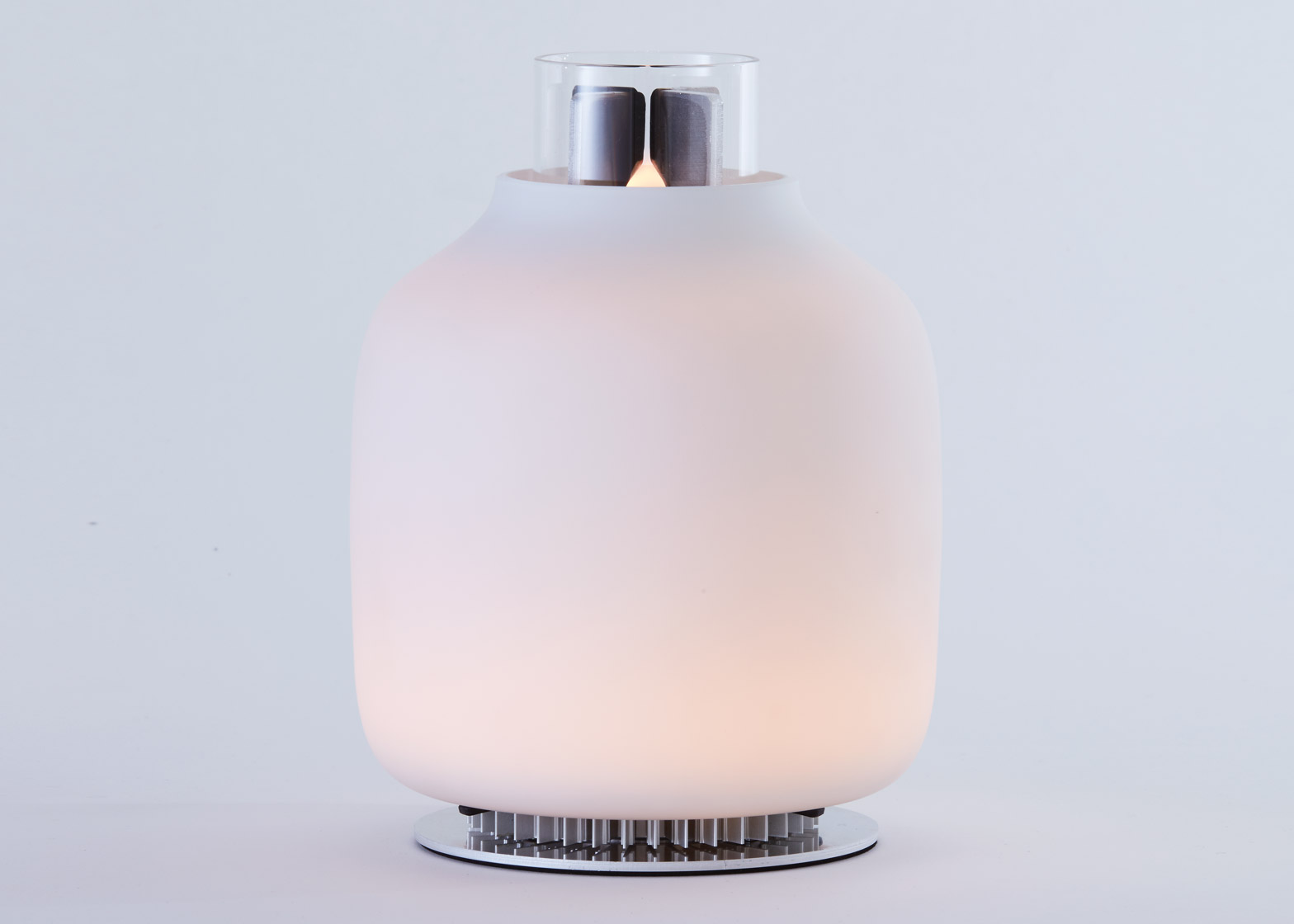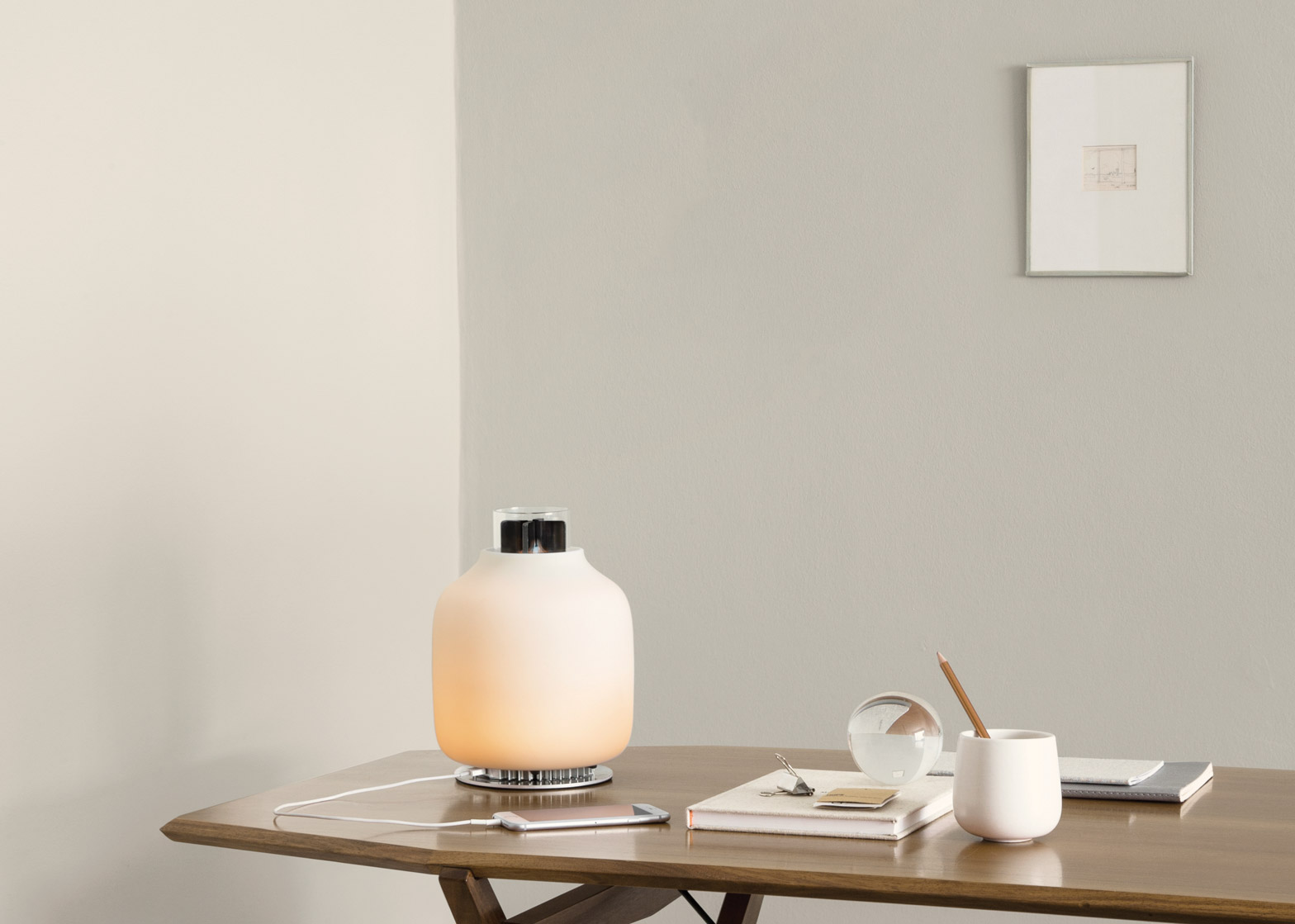Milan 2016: this cordless lamp generates its own electricity from bio ethanol, creating enough power to additionally charge a smartphone.
Francisco Gomez Paz, an Argentinian designer who works in Italy, created the Candela lamp as the first product for new Danish-Italian lighting brand Astep.
Based on traditional Scandinavian lanterns, the lamp uses a smokeless flame created to generate electricity, powering LEDs and charging a battery pack that can be used to power a phone.
Conceived as a technological update to the traditional oil lamp, Candela uses a 19th-century scientific discovery to create its own electricity out of temperature differences created by the flame.
"Candela is really something new and is also putting together the traditional and the future," said Astep founder Alessandro Sarfatti, "because typologically it's a lantern, an oil lamp, something that you move, that you bring around, but with 21st century technology – because the magic is that the heat of the flame is transformed into electricity."
A re-fillable aluminium canister at the centre of the light contains the bio ethanol, a fuel that burns cleanly and is made from fermented corn.
The wick is made from ceramic fibres and coated at the top with aluminium powder to give it a lifespan of years. When lit with matches or a lighter, it generates a flame that rises up through the mouth of the hand-blown Czech glass shade.
This heats a series of plates that are arranged around the mouth of the cover and channel heat down to the top surface of a thermoelectric generator, before it is dissipated into the aluminium base underneath.
The two different temperatures create a current through the generator, which in turn powers 24 LEDs around the base, and the light from these is diffused by the glass cover.
Surplus energy is collected in a battery cell, which can be used to charge a phone via a USB port. The canister contains enough fuel for the lamp to last for six hours at a time.
The technology is based on a thermoelectric processes discovered by German physicist Thomas Johann Seebeck in the 1820s, that generates a current from differences in temperature.
A further discovery by French physicist Jean-Charles-Athanase Peltier in the 1830s allows the same process to be used for both heating and cooling. Peltier devices were used in other products launched at this year's Milan design week, including the SmartSlab table by Kram/Weisshaar that can cook dinner and keep plates warm and drinks cold at the same time.
The lamp is 24.1 centimetres tall in total and 18.6 centimetres in diameter. It can be used both indoors and outdoors.
Launched at Milan design week, Astep was founded by Sarfatti, the third generation of an Italian design dynasty that includes the founders of lighting brands Arteluce, which was bought by Flos in the 1970s, and Luceplan.
Sarfatti was previously CEO of Luceplan, which was bought by Dutch lighting giant Philips in 2010. He is reviving a number of his grandfather Gino Sarfatti's original 1950s designs from Arteluce under his new brand, with the idea of combining the best of 20th century design with the latest innovations.
"Candela is absolutely innovative, there's nothing like this on the market and that's a fact," said Sarfatti, who is from Milan but now lives in Copenhagen – his company's products will be made in Italy but the business is based in Denmark.
"Of course I built the company to make money, but it's not the only driver for sure," he said. "There are other things, there is an eagerness to try to make a step forward."
The development of LEDs, or Light Emitting Diodes, has progressed rapidly over the past few years with a number of designer now looking to the low energy and long lasting bulbs as the future of lighting.
Industrial designer Arik Levy declared LEDs the light of the future in 2014, and last year prolific French designer Philippe Stark told Dezeen that LED technology means designers are "obliged to redesign all lights".
Candela was on show with Astep's launch collection as part of an exhibition at Milan's Palazzo Litta on Corso Magenta curated by culture magainze Damn, from 11 to 17 April.
Video showing the design of the Candela light by Astep
Berlin architect Diébédo Francis Kéré also created an installation modelled on a typical African village inside Palazzo Litta's courtyard for the show.
Other companies launched during Milan design week 2016 include ceramics brand 2016/, which aims to support the 400-year-old pottery industry of the Japanese town of Arita by working with contemporary designers, and Stefano Giovannoni's internet-based plastic furniture brand Qeeboo.




